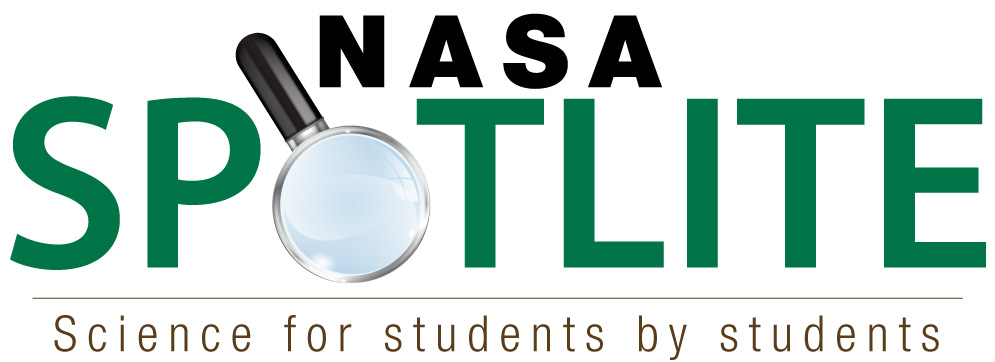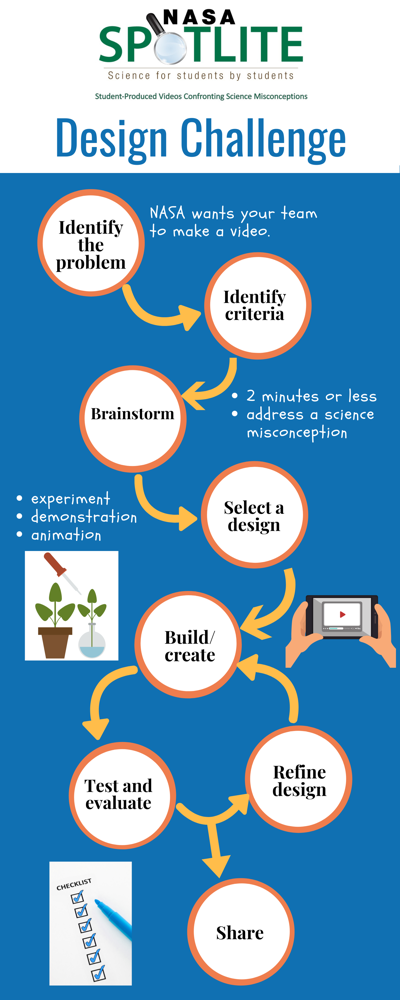
Spotlite Design Challenge
Student Production Teams Needed!
Gather your team, your curiosity, your creativity, and video recording devices to capture observations and create a video for the NASA eClips website.
The National Aeronautics and Space Administration (NASA) wants your team to produce a video for the NASA eClips™ website.
One of NASA's goals is to improve scientific literacy, or our understanding of science. The goal of the video is to engage students in doing activities that can help change their misconceptions about a topic in science.
Each tab provides the information and resources needed to produce a NASA Spotlite video.
To Participate in the Challenge:
- Identify the problem and confront a science misconception by gathering your own evidence through observations and explorations.
- Identify criteria, brainstorm ideas, and select a design to capture your questions and findings and create your Spotlites video.
- Refine your design so you may share your video to challenge others to make their own observations.
Select your Spotlite Challenge topic!
En Español! Selecciona el tema de tu desafío Spotlite!
See examples on the NASA Spotlite Video page and YouTube Channel!
Contact us with any questions about the Spotlite Design Challenge at NASAeClips@nianet.org.
View this video to learn how to create a NASA Spotlite video!

